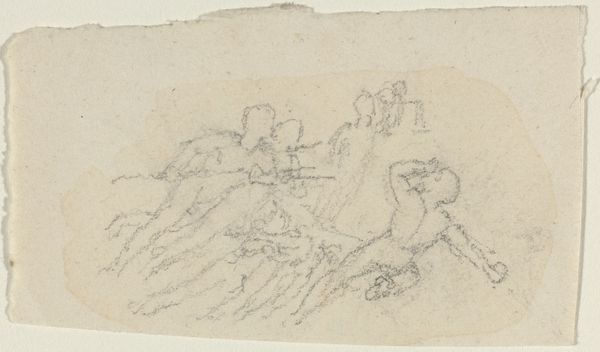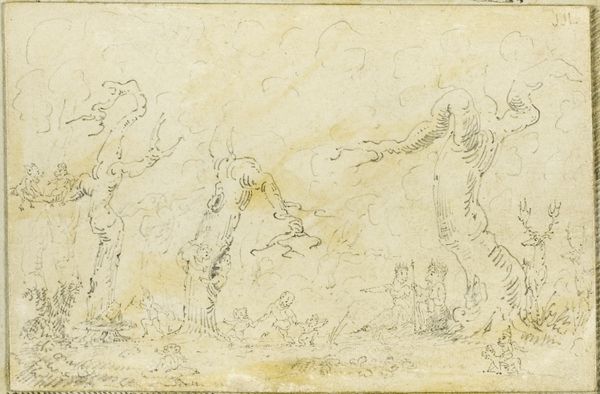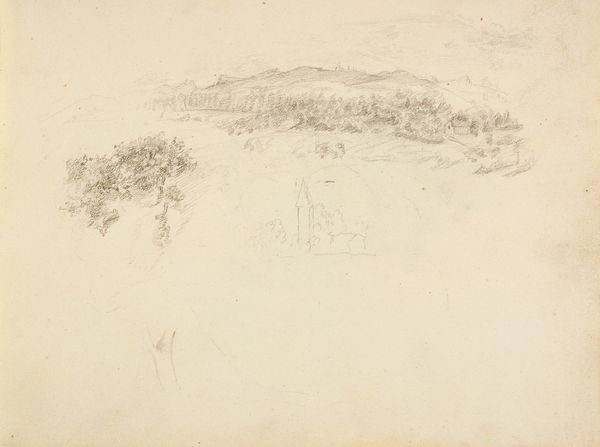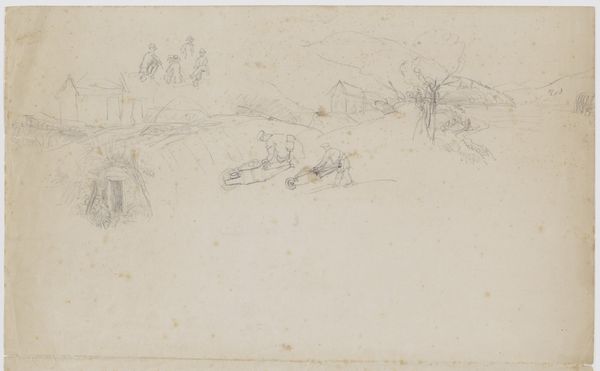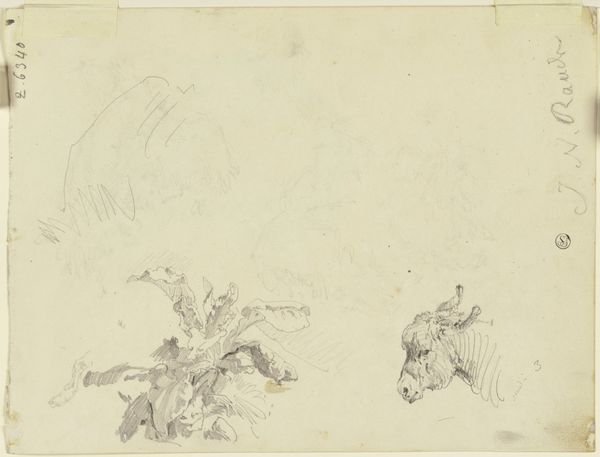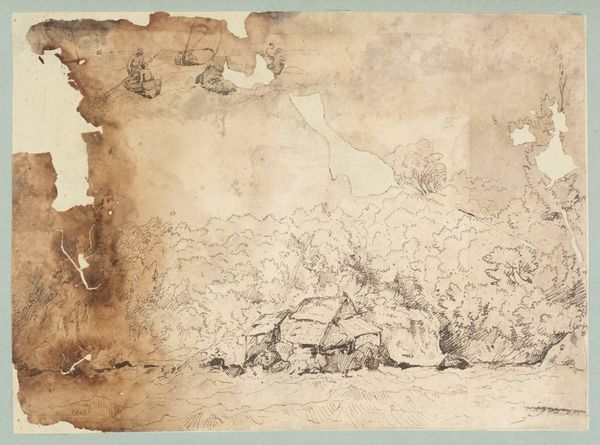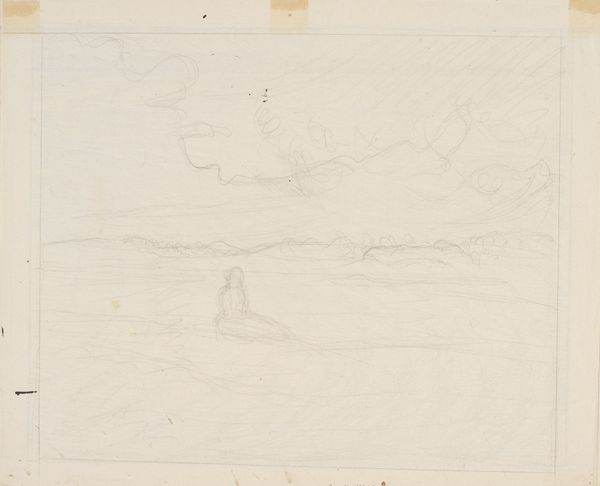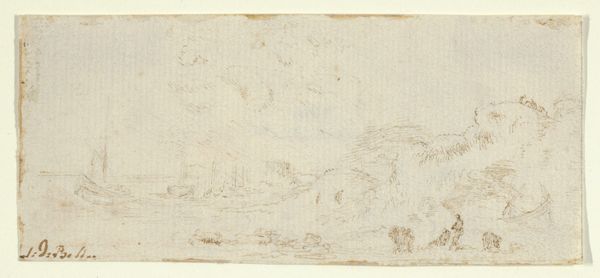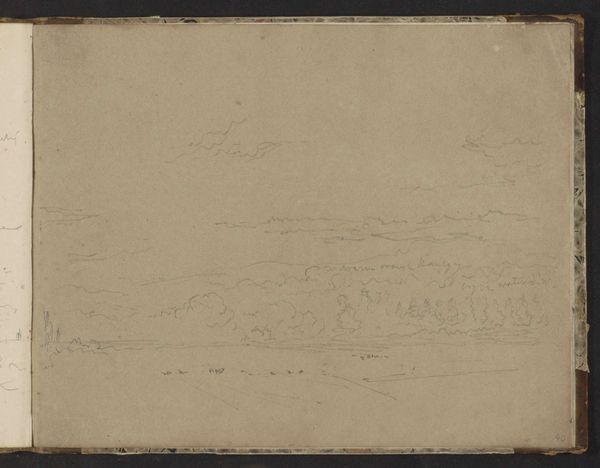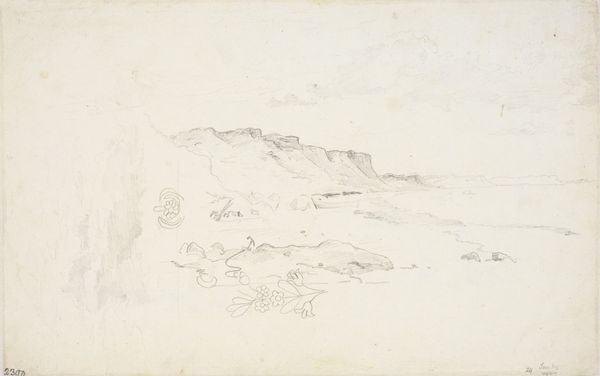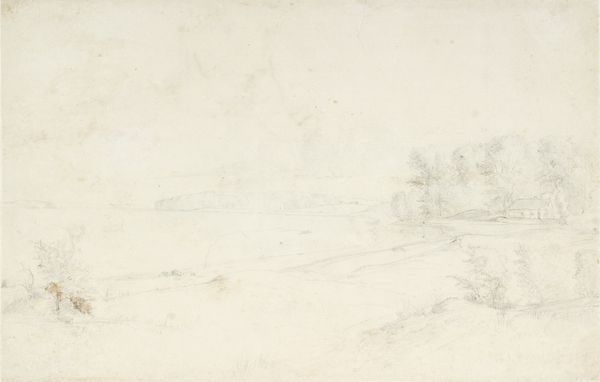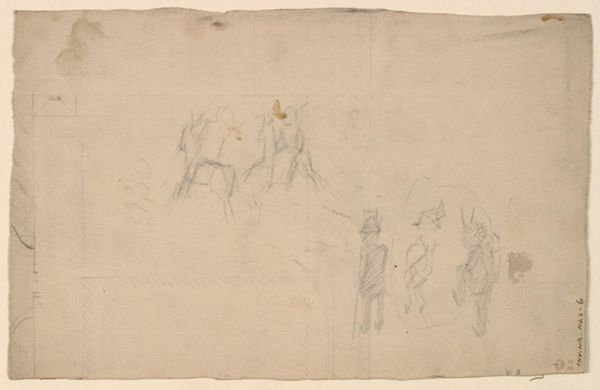
Schweizerlandskab med et klippefremspring over en dal og en gruppe figurer 1777 - 1779
0:00
0:00
Dimensions: 284 mm (height) x 418 mm (width) (bladmaal)
Editor: Here we have Jens Juel’s “Schweizerlandskab med et klippefremspring over en dal og en gruppe figurer,” a landscape drawing in pencil made sometime between 1777 and 1779. It's striking how delicate it is, almost like a fleeting memory of a place. What do you see in this piece? Curator: Beyond the romantic landscape, I see a commentary on societal structures embedded in the representation of nature. The figures are dwarfed by the landscape, yet their presence hints at control and dominion. Consider the era – the late 18th century – a time of exploration and colonialism. How might this idyllic scene reinforce or perhaps subtly critique the power dynamics of observing and possessing land and people? Editor: That’s a really interesting point. I hadn’t considered the colonial aspect. Curator: Ask yourself, whose gaze does this landscape serve? Who gets to leisurely enjoy and depict this "untouched" nature? Was it truly untouched, or were there indigenous communities who are not present in this image? Consider, too, how class intersects with this portrayal. These travelers have the resources for leisure travel and commissioning artwork; their perspective, by definition, represents a privileged elite. How does this knowledge alter your understanding of the landscape? Editor: I guess it shifts the focus from simply appreciating the scenery to questioning the context of its creation and the unseen narratives it might be obscuring. Curator: Precisely. Romanticism often idealizes nature, but we must remain critically aware of whose ideal it is, and who is excluded from that idyllic vision. Editor: I will definitely look at landscape art differently now! Curator: As will I. It's a process. This dialogue, and others, shapes my understanding of the piece.
Comments
No comments
Be the first to comment and join the conversation on the ultimate creative platform.
